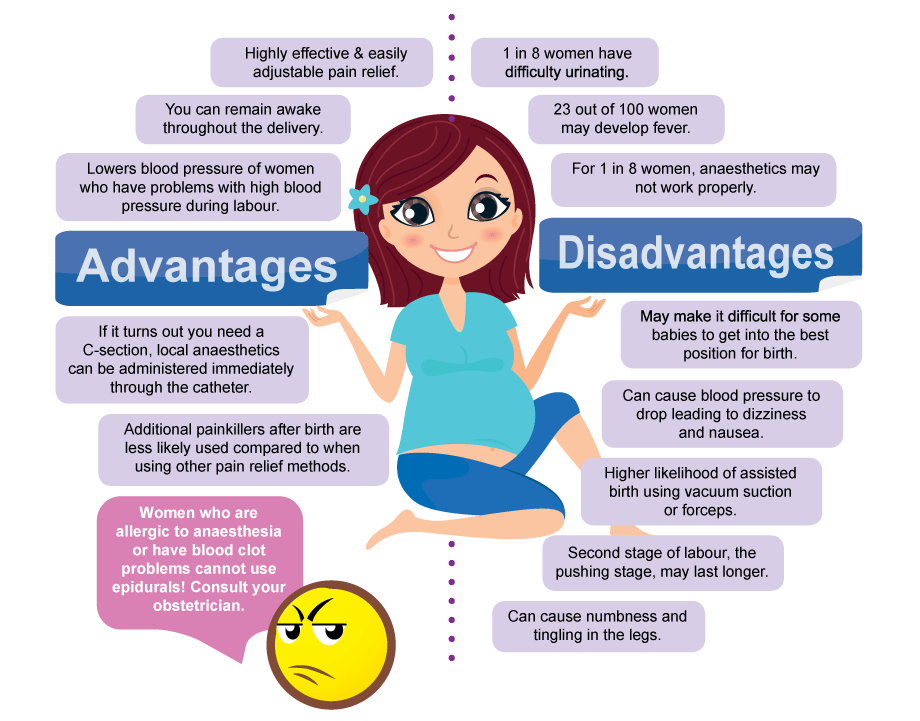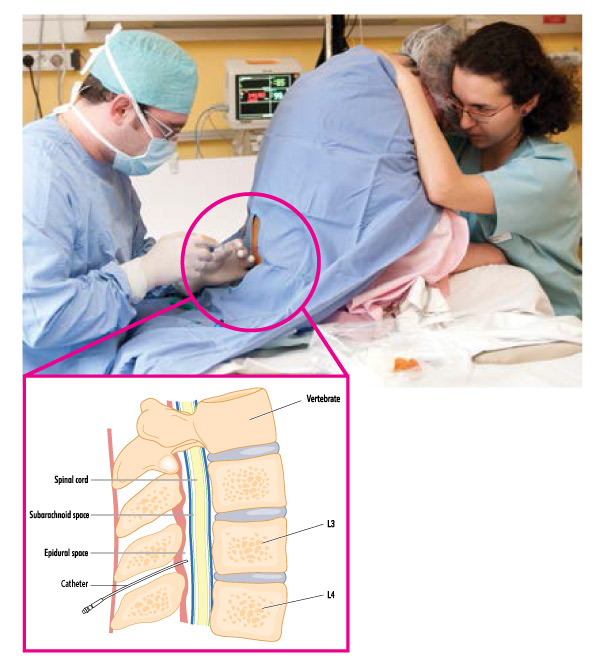An epidural (also termed regional anaesthesia) is a way to deliver an anaesthetic by injecting it into the epidural space of the spine. This stops pain signals from reaching the brain. It is a method of pain control/relief that is commonly used by women during labour and delivery. An epidural is delivered by a trained professional, an anaesthesiologist.
Administering Local Anaesthesia
- Local anaesthesia is injected at the lower part of the spine.
- Once numb, a catheter (plastic tubing) is inserted into the epidural space using a different needle.
- Anaesthetic or painkiller is pumped in as needed through the catheter.
- Epidurals contain a mixture of painkilling drugs, usually a local anaesthetic, bupivacaine or levobupivacaine, and an opioid (fentanyl).
- Effects are felt 10-20 minutes later and can last for 2-3 hours after.
When To Take It?
It can be given at any time during labour but usually administered when the cervix starts dilating 5-6 cm wide – this is when the pain of contraction starts kicking in.
Epidural Myths
Epidural increases chances of needing a C-section
Study of 750 first time mothers by the Feinberg School of Medicine showed no relationship between administration of epidural & frequency of a C-section
You won’t know when to push
Don’t worry, the doctors & nurses will tell you when to push. It doesn’t help to stop the epidural towards the end of labour because this will mean more pain. Plus, it won’t make the birth easier.
Epidurals always work
No they don’t, but for a large majority of women, they do. Sometimes the anaesthetic is not administered properly. This rarely happens & can be rectified without repeating the procedure.

Other Options
Local Anaesthesia – numbs the painful area near the vagina if you need to extend the opening but it does not provide comfort during labour.
Opioids – opioids are dripped into the bloodstream or injected into the muscle. It is not as effective as an epidural but does provide some relief.
Tranquilizers – can reduce anxiety but is rarely used. It won’t relief the pain during labour or birth.
Nitrous Oxide (Laughing Gas) – inhaled using a face mask and works within minutes. You may perceive pain differently but pain is not eliminated entirely.
Transcutaneous electrical nerve Stimulation – this is a non-drug therapy that uses low-voltage electrical current for pain relief.
Non-Medical Pain Relief Options
- Exercise gently and regularly, the more you move during pregnancy, the better prepared your body will be for labour and delivery.
- Learn how to breathe properly during labour.
- Proper breathing can help reduce pain from contraction and help you feel more relaxed.
- Support of spouse (or loved ones) during labour can reduce anxiety.
- Using distractions like listening to your favourite song, can help distract you from the pain.
- Hot or cold packs, massage, a warm shower or immersion in a warm bath. These options are often used if you have a home birth with a trained doula by your side.
An educational collaboration with Obstetrical and Gynaecological Society of Malaysia.






Comments